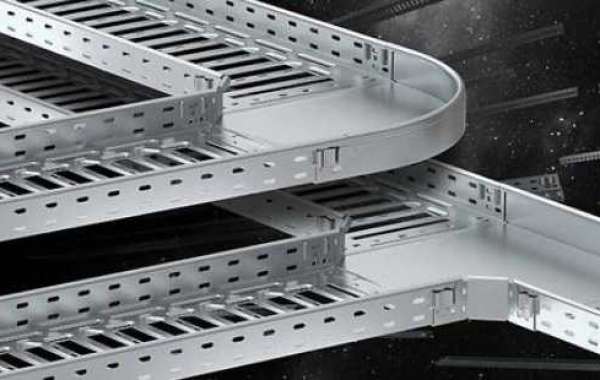
Choosing Metal Cable Trays from Cable Tray Providers
The choice of elements of the cable support system is determined by the type of cable that is laid there. Whether it's sensitive data cables, which must be laid at a certain distance from each other for shielding, or power cables, which require good heat dissipation. In addition, the cable support system must contain and protect the cable laid in the system for a long time.
It is these criteria that determine the parameters taken into account when choosing the elements of the cable support system. Such criteria include the geometric dimensions of the cables, the type of cable, the strength of the elements of the system, the durability of the system, the safety of the system itself, the optimal set of elements for mounting the system, the final cost of the finished route.
Let us consider in more detail the criteria that determine the parameters of the trays:
The diameter of the cables and their number determine the height of the side of the tray and its width. The height of the tray wall must be greater than the diameter of the cable to be laid or the maximum size of the bundle of bundled cables; The width of the tray must be greater than the sum of the diameters of the total number of cables or the sum of the diameters of the total number of bundles of cables to be laid.
Cable Bending Radius by Experts
Minimum cable bending radius specified by the cable tray manufacturer in Pakistan. The bending radius of the fittings must be greater than the minimum bending of the cables. Fiber optic cables are most sensitive to compliance with the minimum cable bend radius due to the optical nature of the transmitted energy.
Requirements for heat dissipation from cables
The heating of the cable depends on what kind of energy flows through the cable. When heated, there is a loss of power in the cable, which is undesirable.
The extra space in the tray helps keep heat away from the cables. Thus, if the cable is not subject to heat (telecommunication), then choose a narrow tray with a high wall for laying cables in several layers, if the cable is subject to heat, choose a wide tray with a low side for laying the cable in one layer.
In addition, if the requirements for heat dissipation are stringent, choose a perforated tray or a wire tray.
The weight of the total number of cables determines the required load capacity of the tray. The thicker the steel used to manufacture the tray, the higher the side wall of the tray, the higher the strength and, therefore, the load-bearing capacity of the tray.
Ladder-type trays can carry the largest load. Metal trays, both perforated and non-perforated, have the same load capacity. Wire trays have the lowest load capacity.
Cable Protection from External Influence
The degree of protection of cables from external influences is regulated by the Classification System for the degrees of protection against the ingress of solid particles and water IP. The degree of protection is determined by the type of cable, indicated by the cable manufacturer.
The degree of protection is determined both by the type of tray and by the external conditions of the installation of the route. Minimum protection for wire trays, maximum protection for non-perforated trays with lids.
The climatic conditions of the route location affect the degree of corrosion. Ambient temperature, air humidity can fluctuate widely, the atmosphere itself can contain corrosive emissions, sea salt, particulate matter, wind, rain, earthquakes.
To increase resistance to corrosion under adverse conditions, metal trays are galvanized in various ways, where the main parameter is the thickness of the galvanized layer. The thicker the galvanized layer, the higher the anti-corrosion protection of the tray.
To place the route indoors, it is sufficient to use galvanized trays with a zinc layer thickness of 2.5-10 microns; or galvanized by the Sendzimir method (conveyor galvanizing) trays with a zinc layer thickness of about 20 microns.
For outdoor placement of the route or placement in wet rooms, galvanized trays are used by hot dipping with a zinc layer thickness of 40-60 microns.
To place the route in tunnels, in the food or chemical industry, stainless steel trays are used.
To place the track in particularly aggressive conditions and / or if there are requirements for the appearance of the trays, trays are used, coated on top of galvanizing with special paints from the RAL palette.
Time and Cost
The speed and cost of system installation are interrelated parameters, since design solutions that provide a high speed of system installation require additional costs in the production of system elements, which increases the cost of such products.
Inexpensive trays and accessories with straight ends require connectors and threaded connectors, which increases the installation time of the system. To optimize costs, it is necessary to take into account the presence of a variety of shaped, connecting elements from specific manufacturers.